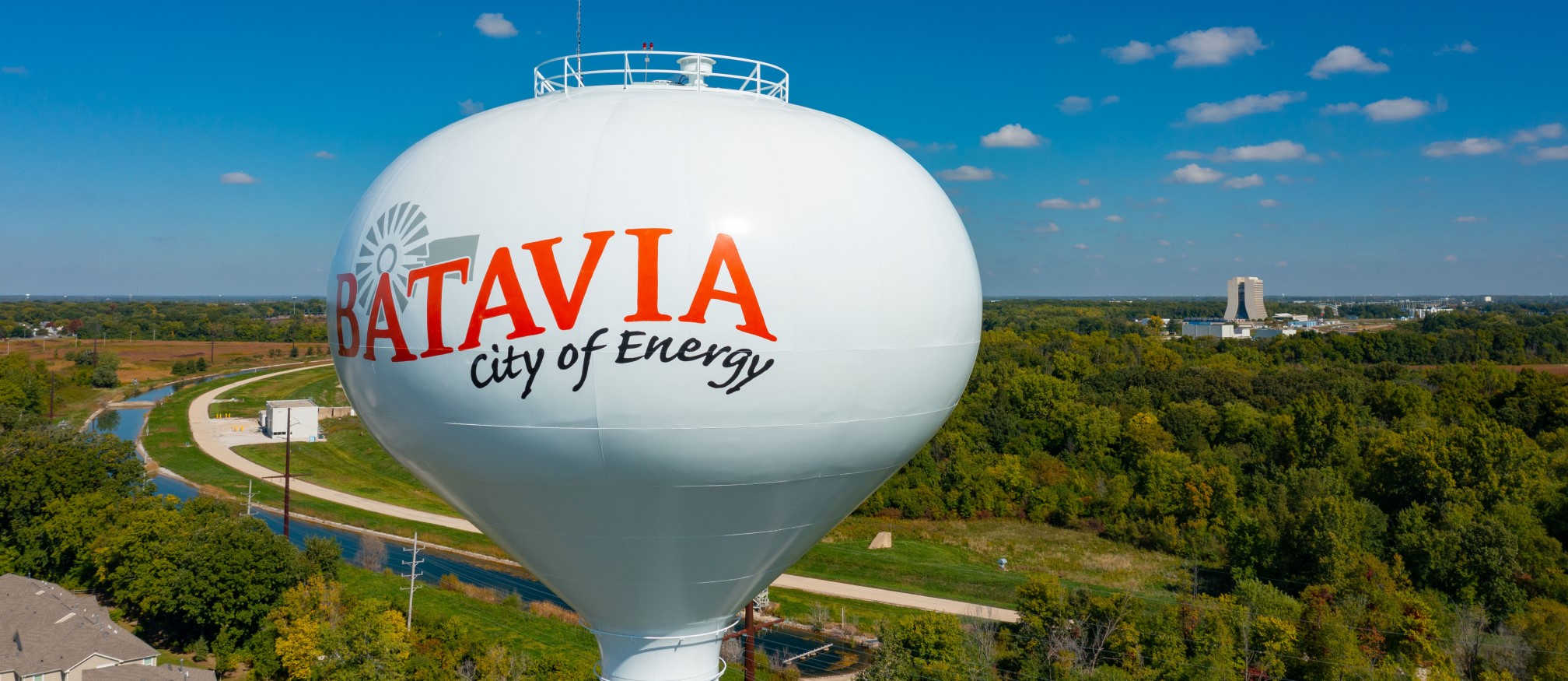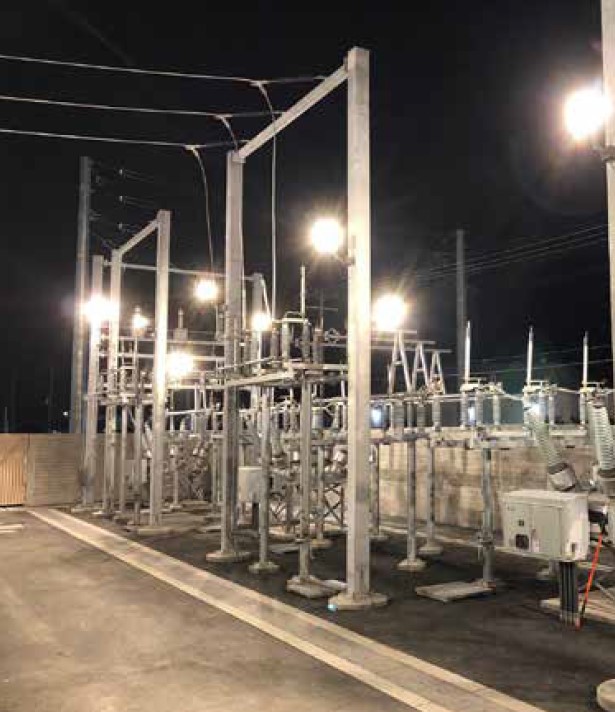Data center load growth has tripled over the past decade, with a sharp increase over the past few years, and the U.S. Department of Energy expects it to double again by 2028. Meeting this load growth is going to be a challenge. Here are a few things to consider when companies are evaluating whether to build new data centers in your community.
Here, There, and Everywhere
First, recognize that data center load isn’t solely a concern for larger utilities. The city of Batavia, Illinois, serves more than 26,000 residents and businesses in a community west of Chicago. Communities surrounding Batavia are served by ComEd, which has invested heavily in upgraded transmission and distribution infrastructure over the past 10 years. This has helped meet the transmission requirements of nearby data centers, while the ample water from Lake Michigan is brought in to cool their servers.
Due to the closeness of surrounding communities, what Batavia doesn’t have is much open space, which has limited the kind of data centers that can be built within its confines.
“We don’t necessarily have 50-acre parcels available or even 20-acre parcels where someone could build a campus with multiple buildings,” explained Steve Allen, P.E., Batavia’s electric superintendent. “We still have niche or boutique-type data centers that have reached out to us, centers in the 20- to 50-megawatt range.” So far, Allen noted, no data center has decided to locate in Batavia.

Regardless of megawatt capacity, Allen noted that companies looking to build data centers invariably start with the same question: “How much power can we get, and how soon can we get it?”
Answering that question comes down to modeling, a task that’s a balancing act between the data center’s actual consumption, what regulators will accept as a load forecast, and what utilities need to do for resource adequacy, said Kathleen Hughes, assistant director of resources procurement, management, and customer engagement for Silicon Valley Power in Santa Clara, California.
Hughes has abundant experience forecasting the needs of new data centers. SVP is a 700-MW utility, and 92% of that power goes to commercial and industrial accounts. About 60% of them are data centers.
According to Hughes, data centers sometimes add significant margin to their projected power demands — claiming they require 50 MW while only using 35. As an additional concern, she said it has become challenging to plan out artificial intelligence data centers due to their often-unpredictable load ramps. “We work with our customers every year and try to get a good picture of what they’re doing so we can plan our resources properly,” she said, adding that planning is a demanding task. “Our engineers model, model, model, and as soon as something is done, it’s outdated.”
Down to the Wires
Capacity isn’t the only concern when it comes to planning new data centers. “Speed is paramount,” said Paul Eory, director of energy analytics solutions at Ascend Analytics. Most data centers are seeking to be operational in a two-year timeframe, he explained. In addition to speed of deployment, data center operators tend to see emissions and cost as other top priorities.
Compared to those demands, supplying power can be a relatively straightforward aspect of serving data center load. “There are some pretty big technical challenges that we need to think about,” Allen said. “What impact does a data center have on the overall load of the city? What does our infrastructure look like where they want to site their facility within our utility territory? What does our interconnection back to the transmission system look like? Do we need to perform any upgrades?”
Batavia has undertaken the modeling needed to address these questions, while the city’s water utility has engaged in similar evaluation when considering how much water will be needed to cool data servers.
Batavia’s models show the city can accommodate currently planned data centers. What remains uncertain is how this might run against future electrification that spurs load growth. “If I’ve got a peak load around 85 MW, a data center who wants 50 MW when they get to town, and our interconnection is only good for 150 MW, that puts us close to our margin for growth. Batavia would need to start talking to ComEd about getting additional capacity from the transmission system to serve future load,” Allen noted.
Eory said there’s no time like the present to start looking at these issues, especially since interconnection and new construction can take years to complete. In a world where customers are hoping to see their facilities built and open in a couple of years, proactive planning could pay off.
“Capacity studies can take months, and those months are eating into this two-year timeline,” Eory said. He recommends that utilities start looking at their systems and modeling those what-ifs, e.g., “What if we put hundreds of megawatts here?”
He also recommends that utilities work with their transmission providers in advance to find out if they have capacity nearby, which will allow planners to best anticipate data center load when new sites become operational. “That’s the physical line capacity side. After you’ve figured out if you have physical capacity, get creative or consider partnering with procurement experts who can help you figure out the best way to supply the energy,” he said.
“The traditional integrated resource plan [IRP] and procurement process that many utilities or their joint action agencies go through can take, at minimum, a year for an integrated resource plan and then another year to go procure,” Eory said. “You’ve gone through the two years already.”
He noted that utilities can abridge that process to six months by combining the IRP and procurement plan into one effort. Instead of sending ad hoc estimates of renewable asset costs, storage costs, or thermal costs, he urges clients to feed bids into an IRP in real time. That way, utility managers can say, “Here’s how I would meet that growth, starting with transmission line capacity, and then moving into what generation or behind-the-meter options are available.”
Paul Saferstein, senior adviser for data centers at Ascend Analytics, noted that behind-the-meter options can include microgrids. “There is enough demand from the data center side that some are interested in figuring out if the campuses can come off-grid and self-power,” he added. “That said, the data centers are not in the power business, and they tend to want a partner around or have generator partners on the property.”
Saferstein explained that theoretically any on-premise generation can power a so-called microgrid. However, “in the holistic sense, microgrids should be seen as a 24/7 power island where you don’t need to interconnect.”
Another solution some data center operators are starting to consider is non-firm power from the utility — power that can be curtailed when necessary — that would be paired with behind-the-meter energy storage, Saferstein added.
Money Talks
In Santa Clara, planning is underway to increase local transmission capacity. “It’s a $400 million undertaking,” said Nicolas Procos, chief operating officer for SVP.
With new data center load coming online, SVP expects to grow from a 700-MW utility to a 1,200-MW utility in the early 2030s. To meet that load growth, Procos says the utility is targeting upgrades to receiving stations — the interconnections to the bulk electric system — in addition to 50 MW of battery storage within city limits and a new 115-kilovolt line.
In this case, residential customers will not end up shouldering the cost of new grid infrastructure. “One rate class can’t subsidize another rate class,” Hughes noted.
She added that assigning extra costs may be easier in California than in other states because legislation allows utilities to charge fees related to the cost of serving a customer. When a utility must add a substation dedicated to a large data center, that data center is on the line for its cost.

SVP also has a mechanism that enables utilities to charge large customers upfront for improvements driven by new loads, Procos said. “It’s what we call a load development fee, and we update it every year,” he explained. If system upgrades include the replacement of aging assets and the expansion of capacity, the cost winds up being split between existing and future customers.
Another way utilities are getting data centers to pay for necessary upgrades is through take-or-pay rates. “Historically, data centers reserve and sell capacity to their customers, and they sell 100% capacity factors, but you might only get 60% in terms of true load,” Saferstein said. “Now, minimums are coming where the utility says, ‘We’ll deploy that $10 billion, but make sure 85% of that is guaranteed take-for-pay usage (i.e., cost recovery) and that gets baked into the contract pricing.’ All of a sudden, data centers are having to charge customers or pay more for underutilized capacity.”
“The devil is in the details on agreements with data centers,” Procos said. “Our new ones have a ramp rate. If the agreement says the center will use 50 MW, we say, ‘OK, we’ll give you that over time.’ Maybe they’ll start out at 15 MW, then move to 20, then 25, and so on. We know they’re not going to show up and go straight to 50 MW. This helps us model our system better and understand the impacts.”
Regardless of the challenges presented by load growth and infrastructure development, Hughes said utilities should keep in mind the public benefits that data centers provide. “Whether it’s property taxes without all the city services and cost, or what they do for the general fund through our energy sales, focus on the value data centers bring,” she said. “Make sure you’re communicating those benefits to your community.”

